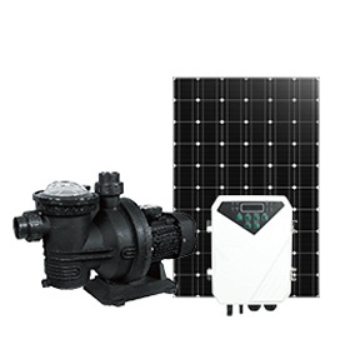Before diving into specifics, it’s essential to grasp some fundamental concepts related to solar water pump systems:
Key Terms and Definitions
- Head: The height that a pump can raise water vertically from the water source to the discharge point. It’s usually measured in meters (m) or feet (ft).
- Flow Rate: The volume of water that can be pumped per unit of time, typically measured in liters per minute (L/min) or gallons per minute (GPM).
- Efficiency: How well a pump converts the solar energy it receives into pumping power without excessive waste.
Step-by-Step Guide to Choosing the Right Parameters
Step 1: Assess Your Water Needs
Calculate Required Flow Rate
- Method: Estimate the total volume of water needed per day for your specific application (e.g., irrigation, livestock, domestic use), and divide this by the number of operating hours per day to get the required flow rate.
Determine Maximum Head
- Method: Measure the vertical distance from the water source to the highest point of discharge. Add a safety margin (about 10-20%) to accommodate for any loss in pressure or unforeseen elevation changes.
Step 2: Analyze Sunlight Availability
- Consideration: The amount of sunlight your location receives directly affects the solar panel’s performance, which in turn impacts the pump’s operation.
- Method: Use solar irradiance maps or local meteorological data to estimate average sunlight hours per day across different seasons.
Step 3: Select Suitable Pump Type and Size
Choose Pump Type Based on Head and Flow Rate
- Options: Submersible pumps are ideal for deep wells or boreholes, whereas surface pumps are suitable for shallow water sources or when water needs to be moved horizontally.
Match Pump Size with Solar Panel Output
- Method: Ensure that the wattage of the solar panels is compatible with the power requirements of the pump. The pump’s specifications should include the minimum and optimal power ratings.
Step 4: Opt for Appropriate Solar Panel Configuration
Calculate Total Energy Requirement
- Method: Multiply the pump’s wattage by the number of operational hours per day to calculate the total energy needed. Factor in the efficiency rate of the solar panels to determine the total panel output required.
Configure Panels Accordingly
- Method: Depending on your space and budget, configure the necessary number of panels in series or parallel to achieve the required energy output.
Step 5: Consider Additional Components
Battery Backup
- Usage: A battery backup can ensure continuous operation during cloudy or rainy days. Calculate the battery size needed based on the energy consumption of the pump and the anticipated number of backup hours required.
Controllers and Sensors
- Advantages: Include controllers to optimize the energy use and protect the pump from overvoltage or dry running. Sensors can help monitor system performance and provide valuable data for adjusting operation parameters.
Conclusion
Choosing the right head and parameters for a solar water pump involves careful consideration of your water needs, the geographical and environmental conditions, and the technical specifications of the pump and solar panels. By following these structured steps, you can ensure that your solar water pump system is both efficient and effective, providing reliable water supply while minimizing energy costs.
This detailed approach not only aids in selecting the perfect system for your needs but also contributes to sustainable water resource management. Always consider consulting with a professional to verify your calculations and choices to achieve the best possible setup.









